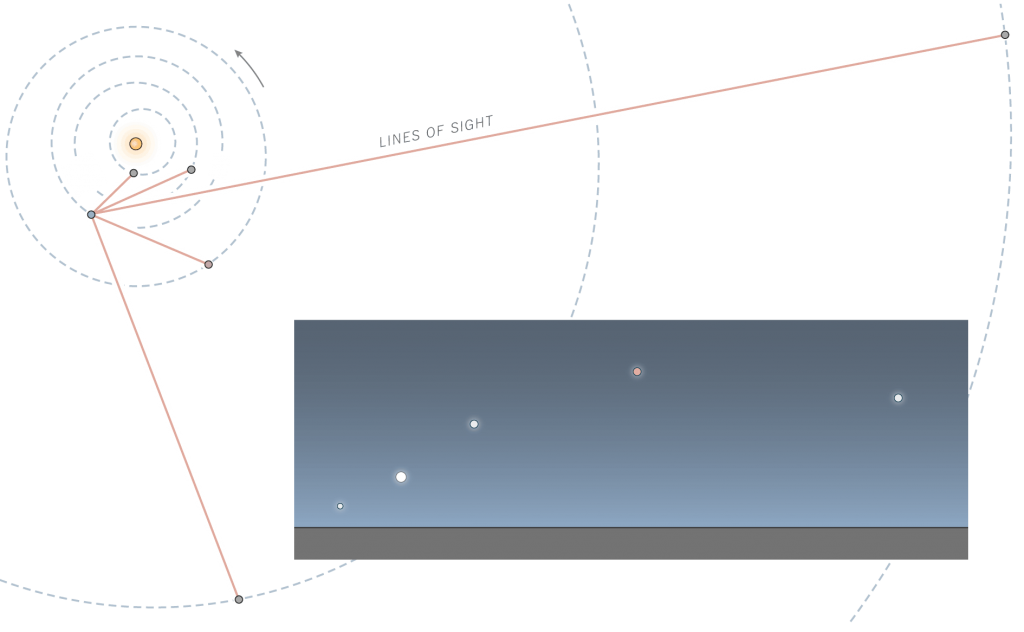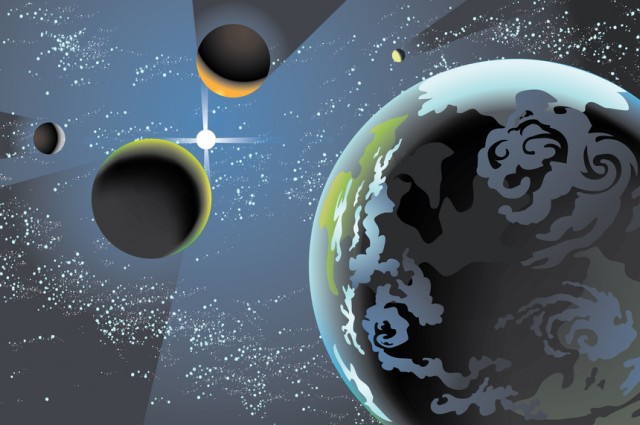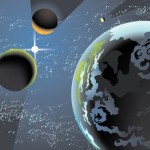
The Alignment Of These Five Earthly Neighbors Will Be Visible Until Saturday, February 20th.
This month will see a passing moment where Mercury, Venus, Mars, Jupiter, and Saturn – the five planets visible from Earth by the naked eye – will appear in a line from the horizon to the Moon.
The alignment of these five earthly neighbors are visible from the January, 20th to Saturday, February 20.
Dr. Tanya Hill, senior curator at the Melbourne Planetarium, told Australian Geographic that if you don’t catch the allignment this month, you’ll be able to see it again in August of this year, and then again in October 2018.
Dr. Alan Duffy, research fellow at Swinburne University in Melbourne, also spoke to Australian Geographic and gave some advice on how best to see the alignment.
Since Mercury will appear very close to the horizon, find a nice open spot, away from tall buildings or trees. Getting as far away from city lights is also advisable, so each planet’s glow isn’t too drowned out by light pollution.
Venus and Jupiter, however, should be fairly easy to spot and Mars’ distinctive red glow should give itself away. If you can find one of these planets, just hold up your arm so it’s in line with it and the Moon – the rest should fall vaguely in line with your arm.


“There are only a few amazing things in the night sky that can be seen without any equipment,” Dr. Duffy said, adding that this is “something well worth seeing.
Headlining the planetary performance are Mercury, Venus, Mars, Saturn and Jupiter. It is the first time in more than a decade that the fab five are simultaneously visible to the naked eye, according to Jason Kendall, who is on the board of the Amateur Astronomers Association of New York.
Admission to the daily show is free, though stargazers in the Northern Hemisphere should plan to get up about 45 minutes before sunrise to catch it. City dwellers can stay in their neighborhoods to watch, as long as they point their attention to the east, according to Mr. Kendall, who took his telescope to Inwood Hill Park in Manhattan around 4 a.m. last Wednesday. Mr. Kendall said he immediately saw Jupiter, Mars and Saturn after looking into the crystal clear sky. Venus glowed as bright as an airplane against the darkness when it rose. Aided by his telescope, he also saw Jupiter’s moons and Saturn’s rings.
“For Mercury you will need binoculars,” he said. “It will not jump out at you, but everybody should be able to see Venus and Jupiter.”
He said that Mercury, which was too low to see clearly, will most likely become more visible on Feb. 5 or 6 when it is at its greatest distance from the sun along the horizon. The hardest task for viewers is discerning the planets from stars twinkling in the sky. But Mr. Kendall offered a simple trick: close one eye, stretch out your arm and slowly pass your thumb over a bright dot in the sky. If the dot slowly dims out when your thumb passes over it, it’s a planet. If it quickly blinks out, it’s a distant star.
 The show was expected to run from Jan. 20 until Feb. 20, but the peak time to see all five is from the end of January until the first week of February, when Mercury is at its highest points, according to Sky & Telescope. The display is made possible by the uncommon alignment of all five planets along what is called the “ecliptic” plane of their orbits, according to Jim Green, the planetary science division director at NASA.
The show was expected to run from Jan. 20 until Feb. 20, but the peak time to see all five is from the end of January until the first week of February, when Mercury is at its highest points, according to Sky & Telescope. The display is made possible by the uncommon alignment of all five planets along what is called the “ecliptic” plane of their orbits, according to Jim Green, the planetary science division director at NASA.
Over five weeks, each planet will appear one by one across the sky of the Northern Hemisphere. As it did Wednesday morning, Jupiter will rise first, emerging sometime at night, while the other four planets will make their debuts in the wee hours of the morning. Mars rises second, then Saturn and then Venus — the brightest orb — followed finally by Mercury, which appears about an hour before sunrise.

Each morning display will last until the sun comes up and makes it too bright to see the planets, typically around 7 a.m. It is possible to find specific times when each planet will rise on a given city’s horizon by checking the Old Farmer’s Almanac.
“It’s not super-often you get to see them all at the same time in the sky, it’s like seeing all of your friends at once,” said Jackie Faherty, an astronomer from the American Museum of Natural History. “There they are, the other rocks or balls of gas that are running around the sun.”
Those who miss the planetary alignment in the next few weeks will have another opportunity from Aug. 13 to 19, when the cosmic motley crew gives an encore performance, according to EarthSky.org. That show will take place in the dusk sky, giving stargazers in the Southern Hemisphere the best vantage points.

